
|
"Physics of Complex Systems"
|
Peculiar phenomena observed in complex structures have attracted much interest in this decade. These structures differ from systems with small amount of impurities, which we can handle by regarding as a small perturbation to the corresponding ordered systems. However, a different approach is required for elucidating the physical properties of strongly disordered/complex systems. We are investigating theoretically and numerically the intrinsic nature of these systems.
|
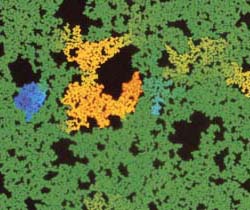
|
Fracton (= strong relocalized vibration) in
two-dimensional percolating network
|
|
                    
|
|
"The World of Electrons Confined in Two Dimensions"
|
The progress of microfabrication technologies has made it possible to confine electrons to two-dimensional systems. Nowadays, two-dimensional electron systems are utilized in many of electronic elements. However, various remarkable features of two-dimensional electrons have not been elucidated yet. We study theoretically relations between quantum mechanical properties of two-dimensional electrons and global structures of systems such as the time reversal symmetry, scale invariance, or topological aspects of systems.
|
| Multifractal wave function at the metal-insulator transition point |
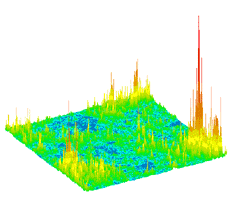
|
|
                    
|
|
"Electrons in Driven Systems"
|
Electrons in nanoscale metals or semiconductors near zero temperatures exhibit their wave-like characters, and provide transport phenomena which cannot be understood by classical mechanics. It is commonly accepted that photon or phonon irradiation breaks their wave-like characters (decoherence). If photons or phonons are coherent, however, electrons keep their states to be waves, and recently it becomes clear that electrons irradiated (driven) coherently show various phenomena quite different from those in static mesoscopic systems. We are trying to understand such phenomena theoretically and to predict new phenomena expected in driven systems.
|
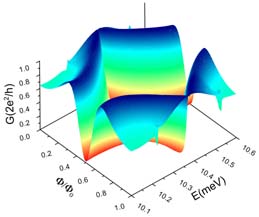
|
Conductance of a driven mesoscopic ring
|
|
                    
|
|
"Colloidal Suspensions"
|
|
Colloids appear in a wide variety of technological and biological systems. Paints, cosmetics, milk and inks are well-known examples of colloids. In addition, colloidal suspensions provide intriguing models for studying crystallization and phase transitions, since the interparticle interaction can be tuned by varying experimental variables such as the effective surface charge density and the ionic strength in an aqueous solution. We are investigating the structural formation of colloidal suspensions in a fluid by Monte Carlo and molecular dynamics simulations, and trying to clarify their physico-chemical properties.
|
| Structure and dynamics of colloidal gels
|
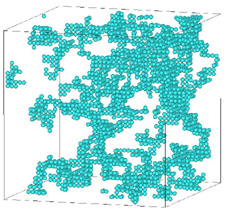
|
|
                    
|
|
"Correlated Motions of Defects in a Condensed Matter"
|
Condensed matters like solids generally contain a large amount of impurities and defects. For sufficiently low concentration of such defects, we can regard those as isolated ones. With increasing the concentration of impurities/defects, the interaction becomes relevant. Moreover, the interaction can be a clue for yielding new physical phenomena. We are investigating the correlated dynamics of defects in semiconductors or glasses at low temperatures.
|
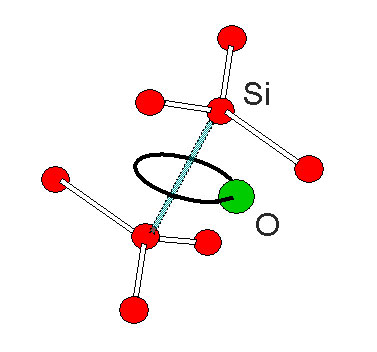
|
A rotating oxygen defect in a Si crystal.
|
|
                    
|
|

|
|